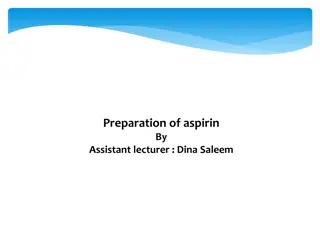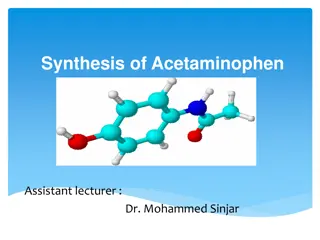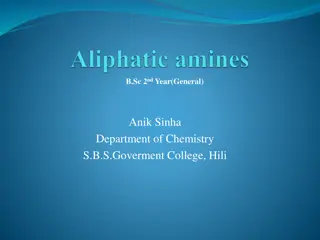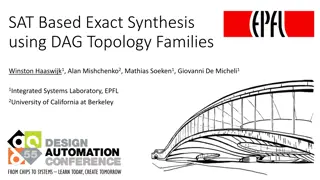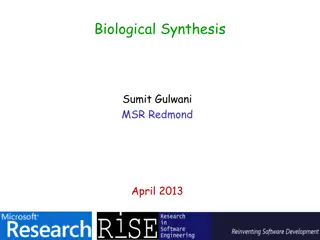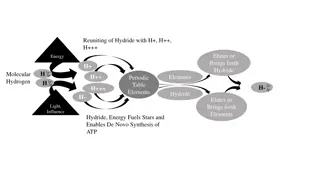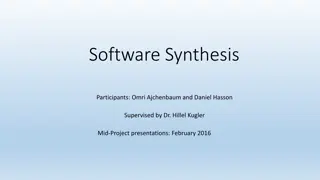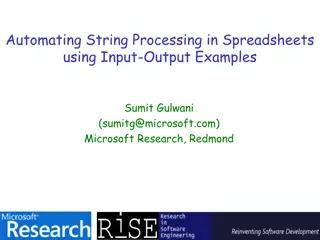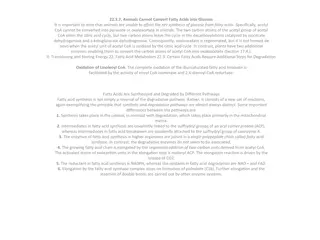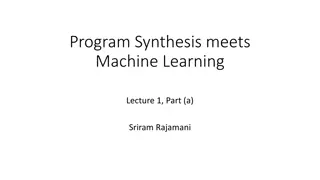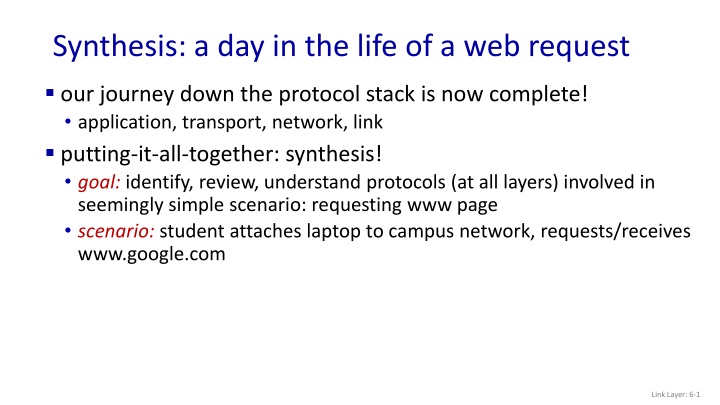
Understanding Protocols Involved in a Web Request Journey
Explore the detailed protocol stack involved in a simple web request scenario where a student connects to a campus network to access www.google.com. Follow the journey from the link layer to application layer protocols to grasp the intricacies of data transmission in networking.
Download Presentation

Please find below an Image/Link to download the presentation.
The content on the website is provided AS IS for your information and personal use only. It may not be sold, licensed, or shared on other websites without obtaining consent from the author. If you encounter any issues during the download, it is possible that the publisher has removed the file from their server.
You are allowed to download the files provided on this website for personal or commercial use, subject to the condition that they are used lawfully. All files are the property of their respective owners.
The content on the website is provided AS IS for your information and personal use only. It may not be sold, licensed, or shared on other websites without obtaining consent from the author.
E N D
Presentation Transcript
Synthesis: a day in the life of a web request our journey down the protocol stack is now complete! application, transport, network, link putting-it-all-together: synthesis! goal: identify, review, understand protocols (at all layers) involved in seemingly simple scenario: requesting www page scenario: student attaches laptop to campus network, requests/receives www.google.com Link Layer: 6-1
A day in the life: scenario A day in the life: scenario scenario: arriving mobile client attaches to network requests web page: www.google.com DNS server browser Comcast network 68.80.0.0/13 school network 68.80.2.0/24 web page Sounds simple! web server Google s network 64.233.160.0/19 64.233.169.105 Link Layer: 6-2
A day in the life: connecting to the Internet A day in the life: connecting to the Internet connecting laptop needs to get its own IP address, addr of first-hop router, addr of DNS server: use DHCP DHCP UDP IP Eth Phy DHCP DHCP DHCP arriving mobile: DHCP client DHCP DHCP DHCP request encapsulated in UDP, encapsulated in IP, encapsulated in 802.3 Ethernet DHCP UDP IP Eth Phy DHCP DHCP DHCP DHCP DHCP Ethernet frame broadcast (dest: FFFFFFFFFFFF) on LAN, received at router running DHCP server Ethernet demuxed to IP demuxed, UDP demuxed to DHCP router has DHCP server Link Layer: 6-3
A day in the life: connecting to the Internet A day in the life: connecting to the Internet DHCP UDP IP Eth Phy DHCP server formulates DHCP ACK containing client s IP address, IP address of first-hop router for client, name & IP address of DNS server DHCP DHCP arriving mobile: DHCP client DHCP DHCP encapsulation at DHCP server, frame forwarded (switch learning) through LAN, demultiplexing at client DHCP DHCP UDP IP Eth Phy DHCP DHCP DHCP DHCP router has DHCP server DHCP client receives DHCP ACK reply Client now has IP address, knows name & addr of DNS server, IP address of its first-hop router Link Layer: 6-4
A day in the life ARP A day in the life ARP (before DNS, before HTTP) (before DNS, before HTTP) DNS UDP IP Eth Phy before sending HTTPrequest, need IP address of www.google.com: DNS DNS DNS DNS ARP arriving mobile: ARP client ARP query DNS query created, encapsulated in UDP, encapsulated in IP, encapsulated in Eth. To send frame to router, need MAC address of router interface: ARP ARP query broadcast, received by router, which replies with ARP reply giving MAC address of router interface client now knows MAC address of first hop router, so can now send frame containing DNS query ARP Eth Phy ARP reply router has ARP server Link Layer: 6-5
A day in the life using DNS A day in the life using DNS DNS DNS UDP IP Eth Phy DNS demuxed to DNS DNS replies to client with IP address of www.google.com DNS UDP IP Eth Phy DNS DNS DNS DNS DNS DNS server DNS DNS DNS Comcast network 68.80.0.0/13 IP datagram containing DNS query forwarded via LAN switch from client to 1st hop router IP datagram forwarded from campus network into Comcast network, routed (tables created by RIP, OSPF, IS-IS and/or BGP routing protocols) to DNS server Link Layer: 6-6
A day in the lifeTCP connection carrying HTTP to send HTTP request, client first opens TCP socket to web server HTTP HTTP TCP IP Eth Phy SYNACK SYN SYN SYNACK SYNACK SYN SYN Comcast network 68.80.0.0/13 TCP SYN segment (step 1 in TCP 3-way handshake) inter- domain routed to web server web server responds with TCP SYNACK (step 2 in TCP 3- way handshake) TCP IP Eth Phy SYNACK SYN SYN SYNACK SYNACK SYNACK SYN TCP connection established! Google web server 64.233.169.105 Link Layer: 6-7
A day in the life HTTP request/reply HTTP request sent into TCP socket IP datagram containing HTTP request routed to www.google.com web server responds with HTTP reply (containing web page) HTTP TCP IP Eth Phy HTTP HTTP HTTP HTTP web page finally (!!!) displayed HTTP HTTP HTTP HTTP HTTP Comcast network 68.80.0.0/13 HTTP TCP IP Eth Phy HTTP HTTP HTTP HTTP HTTP IP datagram containing HTTP reply routed back to client Google web server 64.233.169.105 Link Layer: 6-8
Another Example in Your Daily Life Another Example in Your Daily Life Suppose you walk into LWSN, power on your laptop, connect to PAL3.0 (WiFi), open Youtube to watch a TED talk. What are all the protocol steps that take place? Please introduce each step and protocols used as much as you can. Please explicitly indicate in your steps how you obtain the IP and MAC address of a gateway router.
A Synthesis Example: More A Synthesis Example: More @ Hosts DHCP first, if no valid IP why? a valid IP first, regardless of applications The rest is invoked by the application Dependence other protocols e.g., WEB (URL) DNS UDP IP MAC address in Ethernet (or 802.11) ARP e.g., HTTP TCP the first TCP segment (three-way handshaking) e.g., L2 delivery via WiFi CSMA/CA @Routers (switches) [a network: a distributed system] Routing protocols (inter-AS, intra-AS) performed Self-learning performed at switches

